By Dan Rubinstein
Pressure-sensitive pads placed under bed mattresses can be used to alert seniors, their families and medical professionals to a wide range of health concerns, from breathing difficulties to bladder infections and setbacks following hip replacement surgery.
Analyzing slight colour variations of hands and faces in video footage can determine heart rate and blood pressure changes, and whether these indicators might help predict and prevent debilitating falls among seniors.
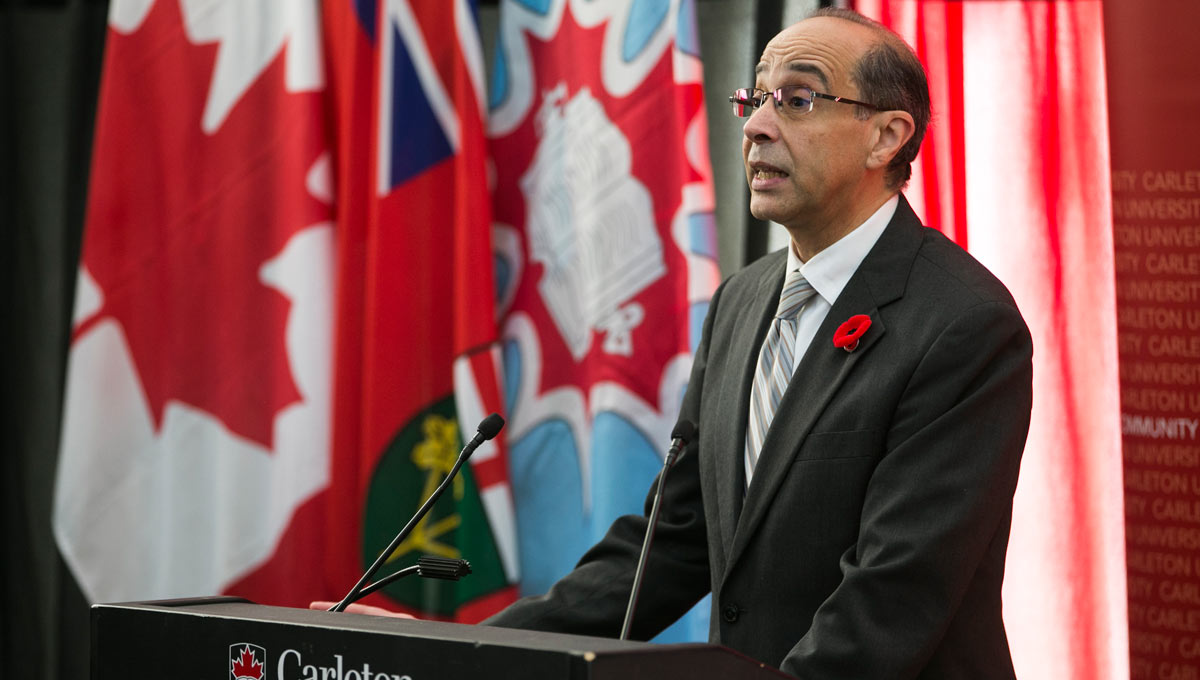
Rafik Goubran, an AGE-WELL leader and Carleton Systems and Computer Engineering professor,<br />as well as the university’s vice-president (Research and International)
These pilot projects, conducted under the banner of Canada’s AGE-WELL network, are contributing to a widespread effort to design smart homes that ensure independent living for seniors. The work is intended to safeguard quality of life and reduce the health-care costs of caring for the country’s aging population — both pressing issues.
Some of this applied research is rooted in embedded sensor technology and digital signal processing, which is the focus of Rafik Goubran, an AGE-WELL leader and Carleton Systems and Computer Engineering professor, as well as the university’s vice-president (Research and International).
“People in the medical community have important problems to solve,” says Goubran, who has spent much of the last dozen or so years collaborating with clinicians on health-related research.
“The solutions can be simple from an engineering perspective. And you can have a huge impact on people’s well-being.”
Whether Goubran is working on equipment to detect explosive materials, obstacle avoidance systems for drones or human mobility and cognition projects, the challenge is often similar, he says: get the data and extract useful information.
And though sensors are only part of the picture, this solutions-oriented mindset is representative of a wide array of Carleton engineers whose research tackles health issues. Partnering with clinical scientists, physicians and medical professionals at institutions such as The Ottawa Hospital, Bruyère Continuing Care and other leading facilities, their work has both short-term and long-term impacts on our collective well-being.
From Systems and Computer Engineering professors Andy Adler, Adrian Chan, Jim Green, Eranga Ukwatta and Yuu Ono — who explore medical image processing, biomedical monitoring, bioinformatics, image analysis methodologies and sensor development, respectively — to biomechanics experts Hanspeter Frei and Andrew Speirs in the Department of Mechanical and Aerospace Engineering, Carleton researchers are focused on addressing health problems before they intensify.
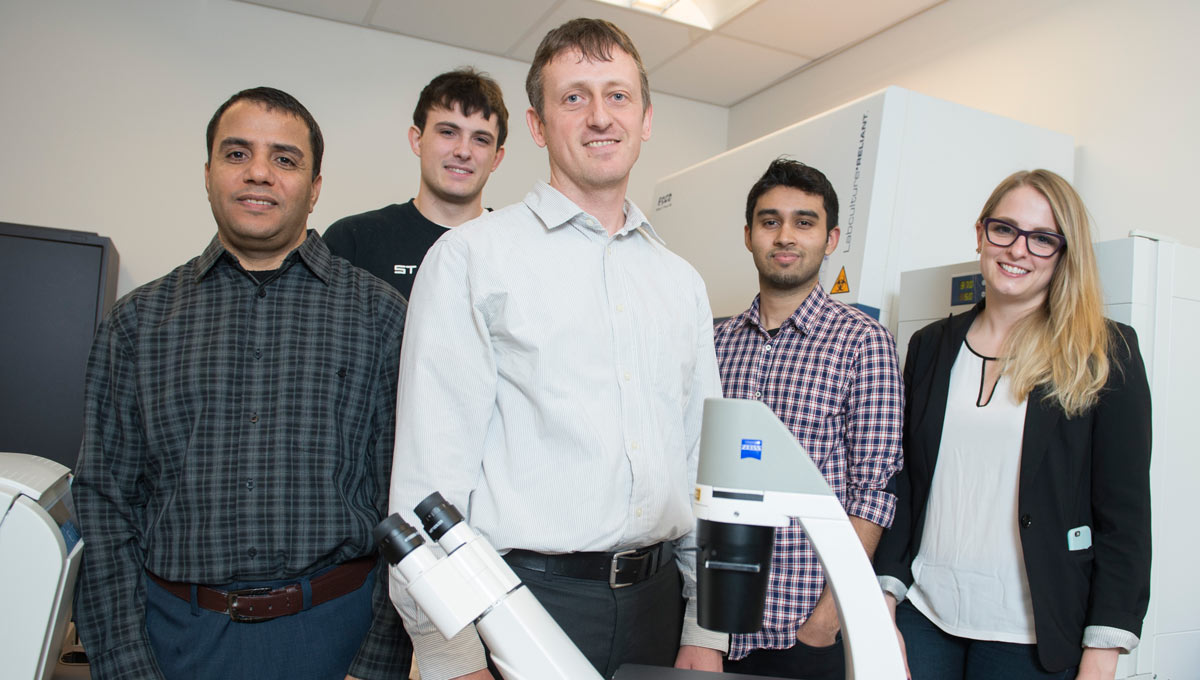
Health Engineering
Emphasizes Prevention
“The main thing is prevention as opposed to intervention,” says Goubran.
“Allowing people to live longer in their own homes reduces pressure on hospitals and nursing homes.”
His bed sensor research, which has been piloted at hospitals, retirement homes and independent living facilities in Ottawa and beyond, relies on measures such as breathing, how frequently people get up at night and how they physically transition off their beds.
A mild concern can prompt an individual to take action — such as reminding somebody recovering from a stroke to do their physiotherapy exercises. A more significant deterioration in performance can lead to a check-up. And a severe issue (such as major breathing difficulties) can alert a smart system to call 911.
On the other side of the coin, if somebody is OK, their relatives or health-care providers will be reassured that there are no acute issues.
Goubran regularly collaborates on his research with Frank Knoefel, a physician who holds cross-appointments at the University of Ottawa’s Department of Family Medicine and Carleton’s Department of Systems and Computer Engineering and is a clinical scientist at the Bruyère Research Institute.
This type of interdisciplinary communication is vital, says Goubran. “There’s a disconnect between what patients and the medical community need and what’s available,” he says. “If engineers and computer scientists are not aware of the problems, they will not come up with solutions.
“Carleton has long been known for transdisciplinary work,” he continues.
“With the strength of our engineering and health sciences programs, plus our policy, psychology and business expertise, health projects are an ideal fit for our research environment.”
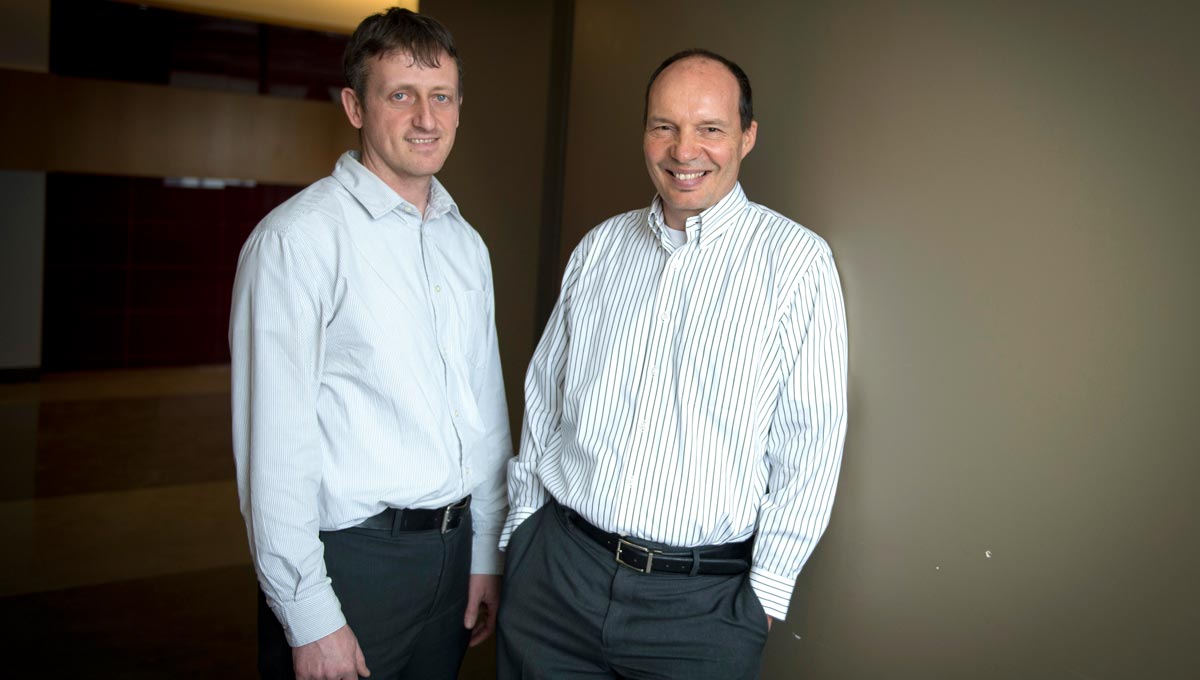
AGE-WELL Blends
Technology, Policy and Business
The AGE-WELL network itself is interdisciplinary. Hosted by Toronto’s University Health Network and supported by $36 million over five years from the federal government’s Networks of Centres of Excellence program, it fuses technology studies with work on policy, regulations and business model development.
Andrew Speirs’ research probes the biomechanics of disease processes in the musculoskeletal system, with a focus on cartilage and osteoarthritis.
Osteoarthritis is a degenerative disease that affects millions of people around the world, a deterioration of the cartilage that cushions the ends of bones inside our joints. It’s typically caused by wear and tear; age is a factor, as is obesity. But biochemical interactions also play a role.
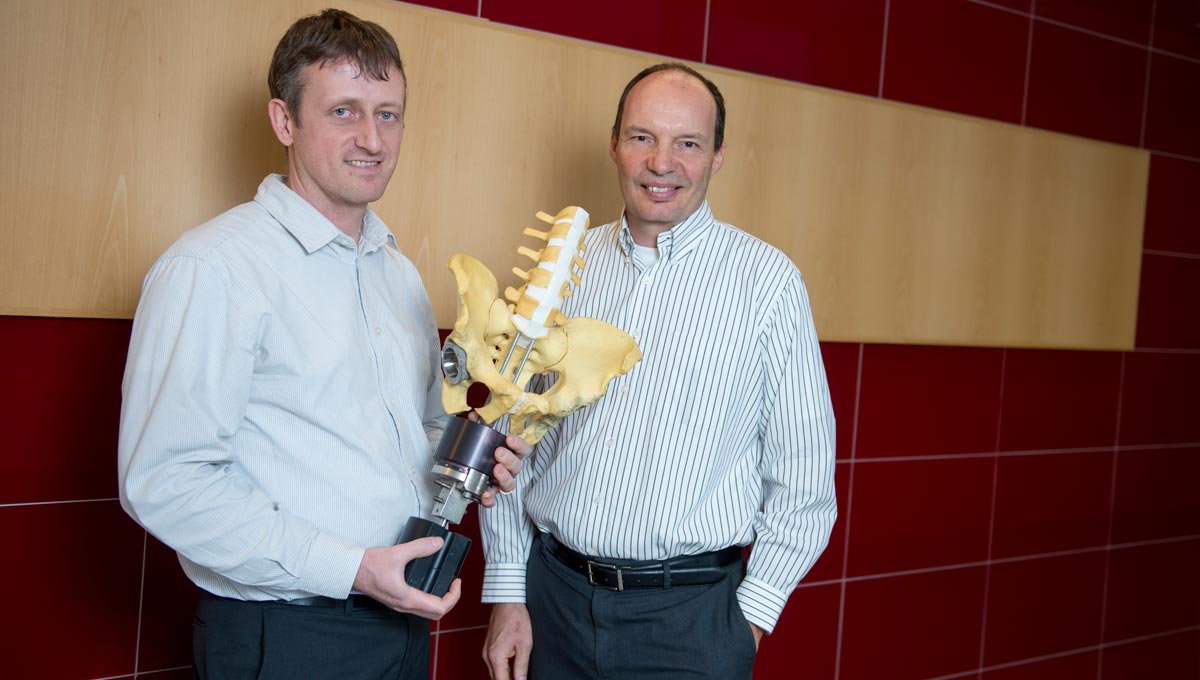
Biomechanics experts Andrew Speirs (left) and Hanspeter Frei<br />are part of Carleton’s collaborative health engineering team.
By conducting clinical tests in an orthopedics lab at The Ottawa Hospital and biomechanical tests in his lab at Carleton, and running computer simulations, Speirs is attempting to gain a deeper understanding of these biochemical signals, including “cross talk” between cartilage and bone, for example, or between cartilage and fat.
Because these signals govern cell behaviour — i.e., instructing cells to produce more tissue or less tissue — this knowledge could go a long way toward preempting the symptoms of diseases such as osteoarthritis.
“We’re trying to understand all this interaction,” says Speirs. “It’s not very well understood at all.”
Last year, he and Carleton master’s student Nadine Vautour attended the first-ever symposium on biochemical cross talk and osteoarthritis, an indication of how new this area of study is.
Currently, the only truly effective treatment for severe osteoarthritis in the hip or knee is joint replacement surgery, says Speirs, but the wait time is long, and a good mechanical implant will only last about 20 years.
Aging demographics mean that more people will need such operations, and many will outlive the implant. “Prevention is always better than surgical intervention,” says Speirs.
His research, which benefits from advances in computing power that allow for faster, more complex simulations, as well as collaborations with MRI radiologists, balances fundamental science with potential applications.
“We need to get a better idea of the big picture,” says Speirs, “so we can come up with effective treatments.”
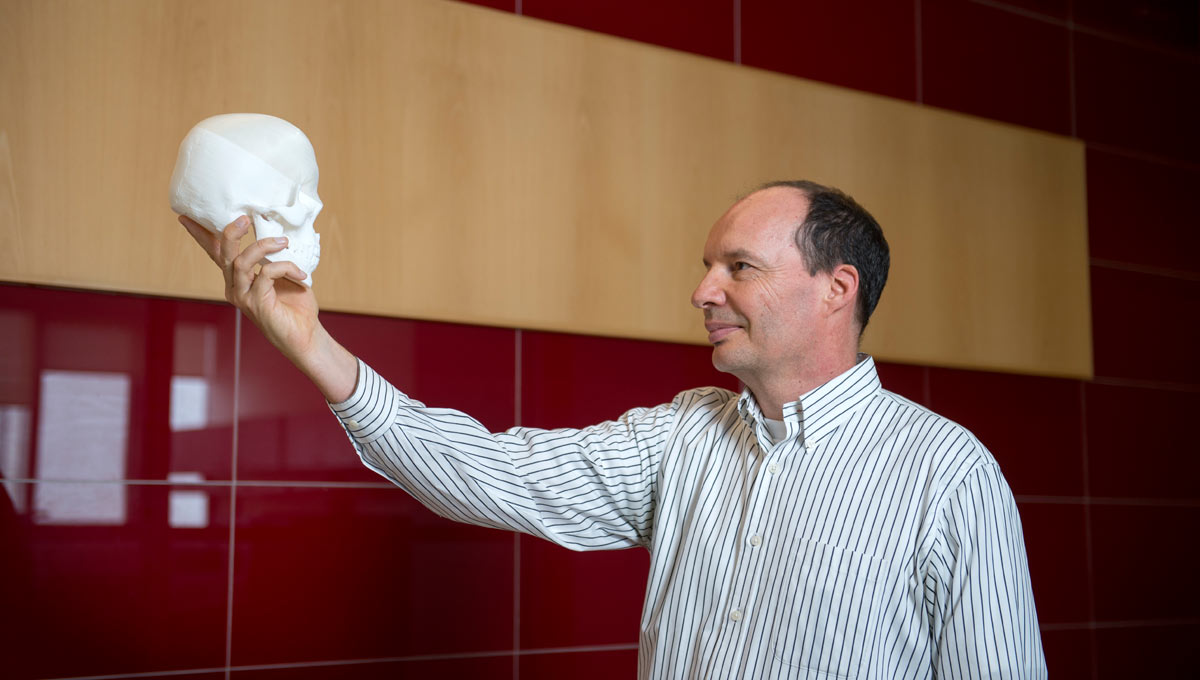
Assisting Surgeons
with New Technology
Speirs’ Mechanical and Aerospace Engineering colleague, Hanspeter Frei, also works on the biomechanics of musculoskeletal diseases such as osteoporosis. One of his goals is to help surgeons by developing novel implants.
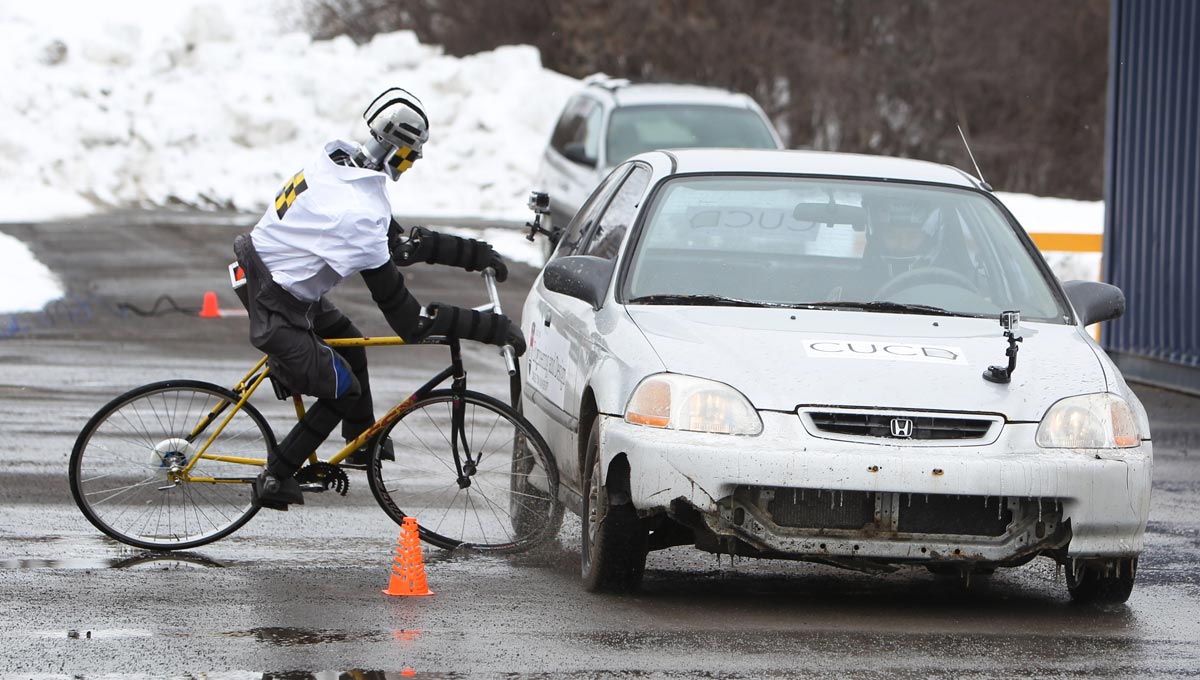
When people age, they lose bone mass, which can contribute to fractures. Implants can be used to hold together bone fragments, but with diminished bone density, it can be difficult to anchor an implant.
So Frei stepped back and used computer simulations to look at what gives bones strength and how they break at a micro level, and is using this information to develop more effective implants.
At the same time, Frei is exploring the use of 3D printing technology to make custom implants for individuals. In the future, a doctor may be able to scan a patient and create bone anchors and implants that are a perfect fit for their anatomy. In several countries, 3D-printed vertebral fusion cages have already been implanted in several countries.
“My goal with 3D printing is basically to allow orthopedic surgeons to print patient-specific implants in their office,” says Frei, “although we still have a long way to go.”
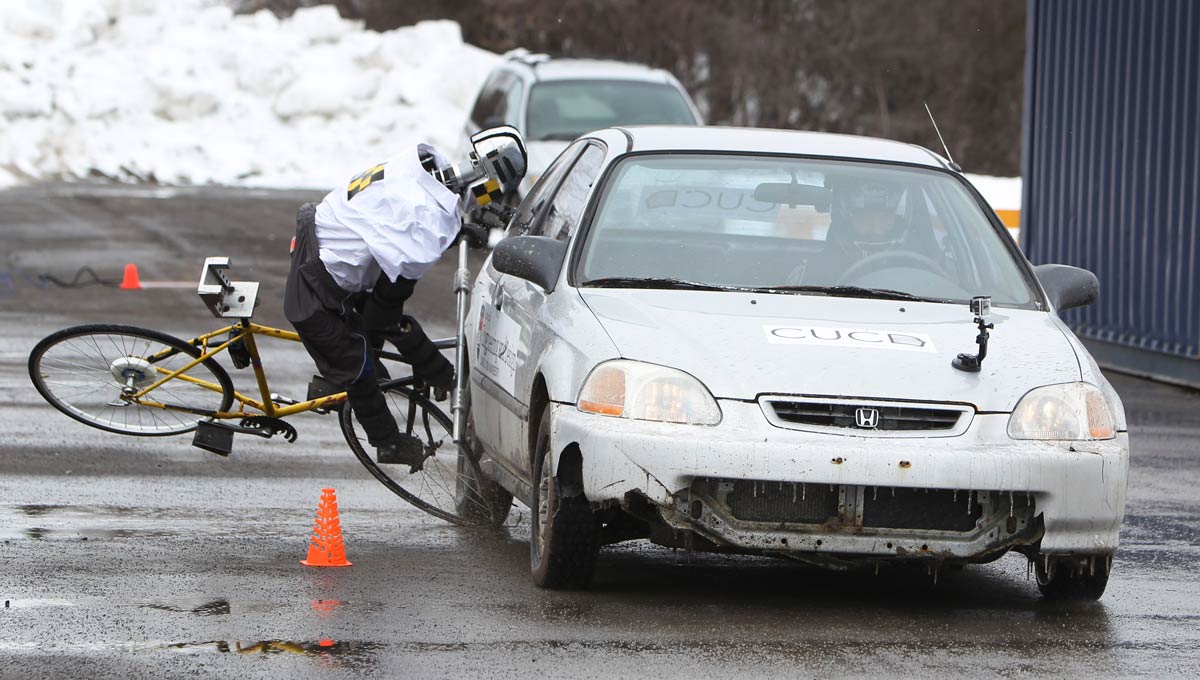
Students supervised by Frei are currently using a custom 3D printer at Carleton to make artificial skin and muscles tissue for the crash test dummy used in a fourth-year engineering student capstone project assessing injuries that result when drivers crash into cyclists.
The more realistic the dummy, the more effective the research. Printing skin and muscle that has the same properties as human tissue is a step in that direction, and meshes with the mindset of Carleton health engineering researchers – to safeguard the well-being of people in their community.
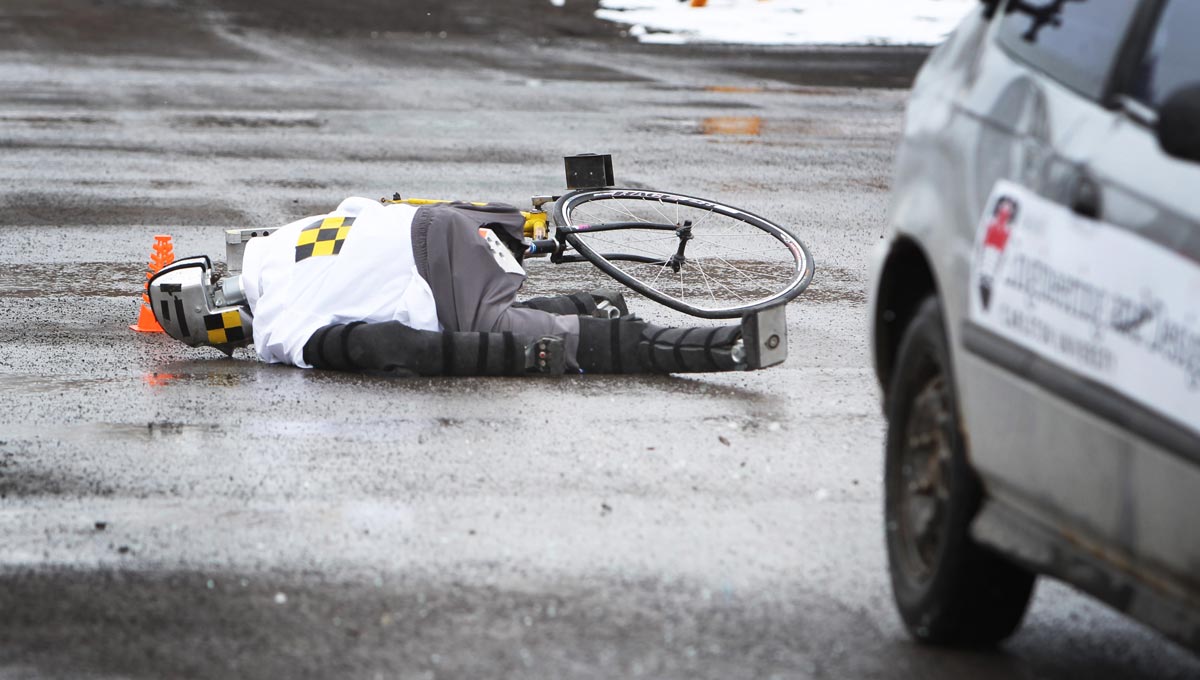
Friday, April 7, 2017 in Engineering, Health, Innovation
Share: Twitter, Facebook



